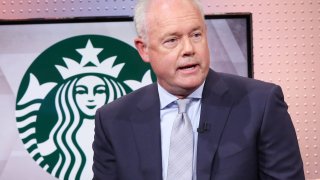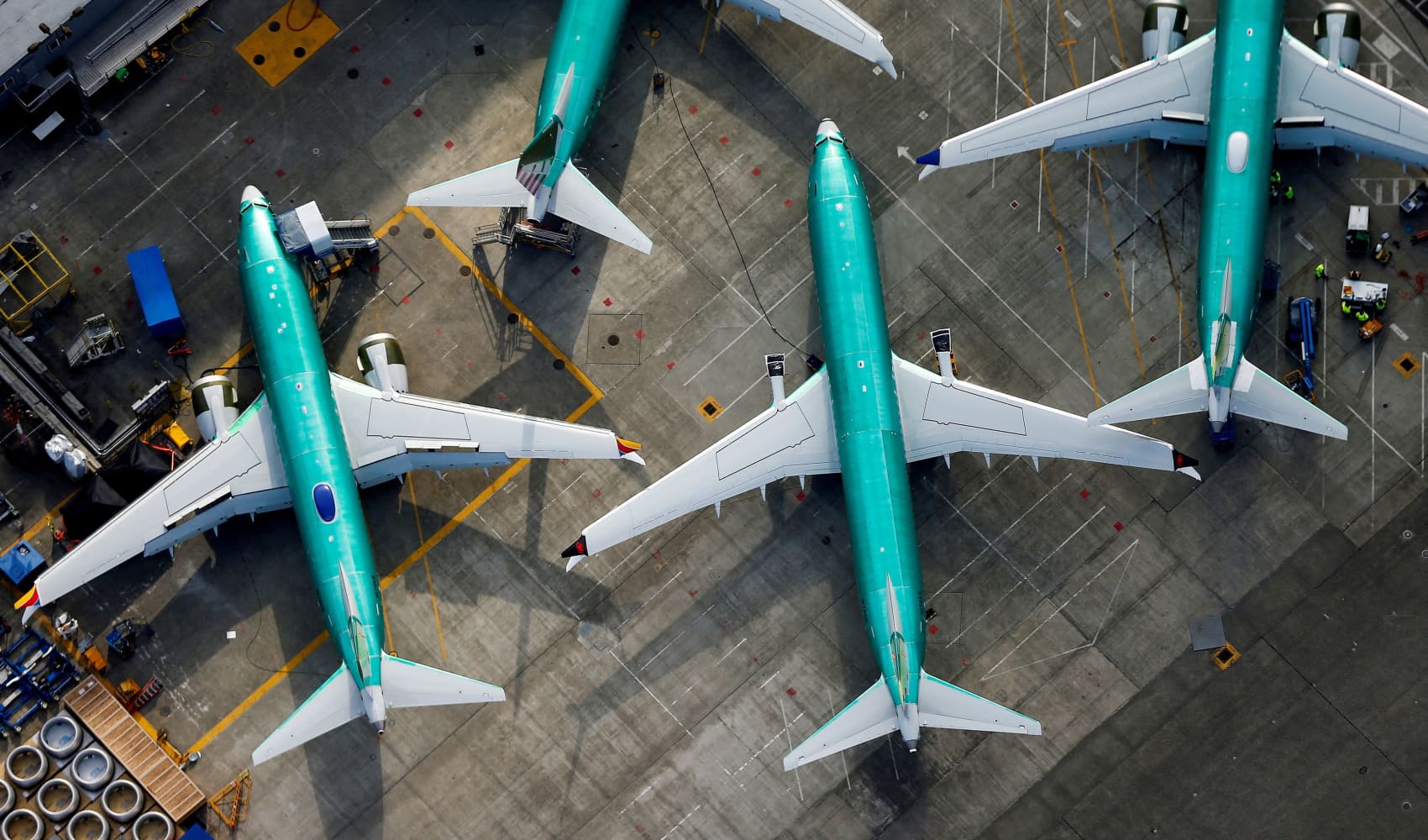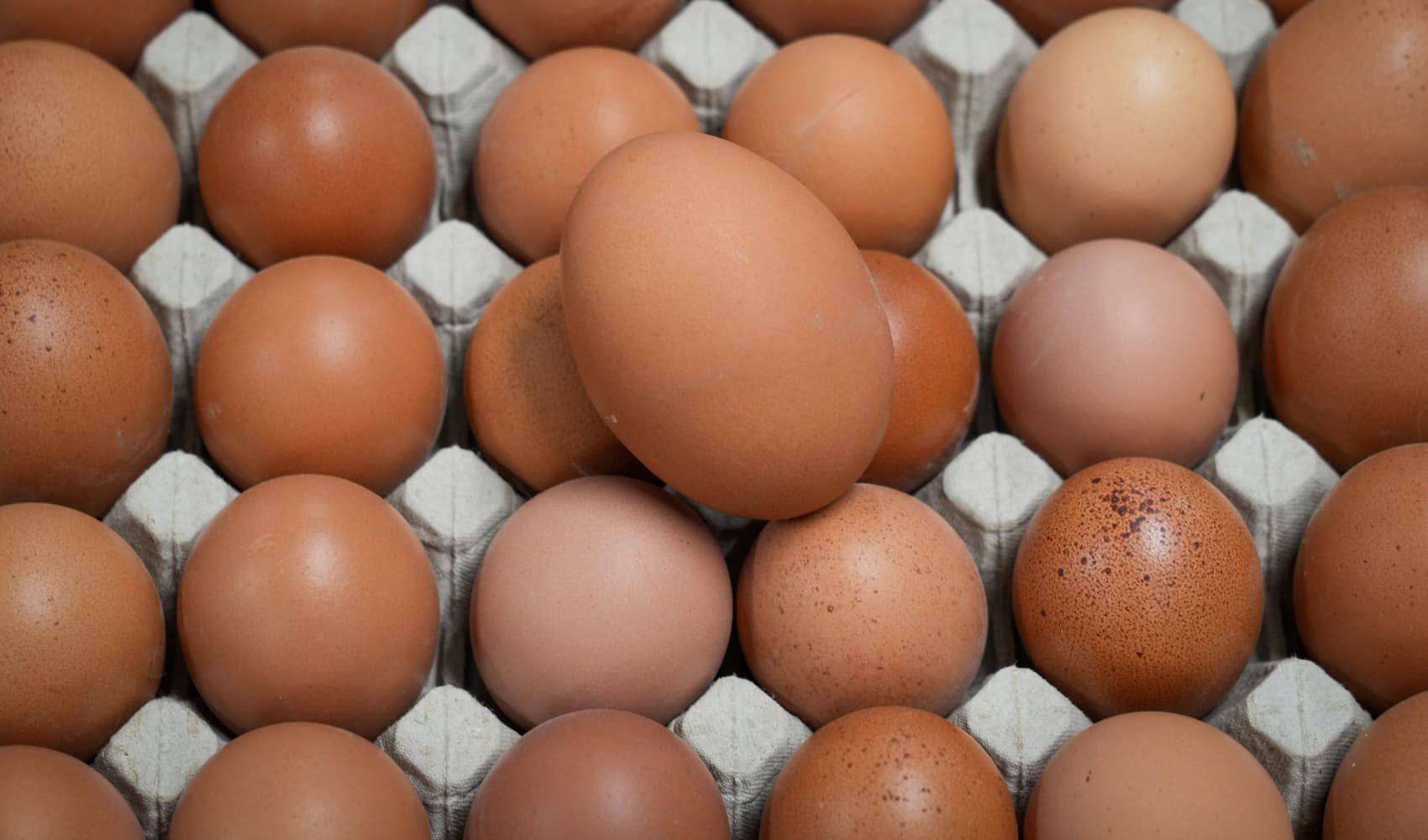
- Starbucks is expected to present its plan for long-term growth at its investor day on Wednesday.
- The pandemic caused the company to lose billions of dollars in sales and spurred some major changes, like hundreds of cafe closures.
- Investors will be looking for an update to its long-term outlook, more details on how its store footprint is changing and how it plans to address new consumer behavior.
Starbucks lost billions of dollars in sales this year due to the coronavirus pandemic, but investors want to know more about the global coffee giant's plans for driving growth in the years to come after the crisis.
At its biennial investor meeting Wednesday afternoon, the company is expected to present its blueprint to regain customers.
Starbucks' sales in the United States and China, its two largest markets, have been rebounding faster than expected. In its fiscal fourth quarter, which ended Sept. 27, same-store sales in the U.S. fell just 9% and only 3% in China. But a new wave of restrictions in the U.S. could slow Starbucks' recovery in its home market.
In fiscal 2021, Starbucks is projecting annual global same-store sales growth of 18% to 23%, assuming that U.S. dining rooms will be fully reopened by the end of the second fiscal quarter, which ends in March.
Shares of Starbucks, which has a $119 billion market value, have risen 15% year to date, as of Tuesday's market close of $101.21. The stock has been pushed higher by positive news about the Covid-19 vaccine, hitting an all-time high of $102.94 last week.
The upswing has made some analysts wary about the stock's valuation, but Oppenheimer raised its price target to $112 ahead of investor day, which would be a nearly 11% gain from current levels.
Money Report
Here's what will likely be included in Starbucks' investor presentation:
A new long-term outlook
Starbucks has already shared its fiscal 2021 forecast with investors, but it hasn't yet shared an update on its long-term outlook. At its last investor meeting in 2018, the company said it expected adjusted earnings per share to rise at least 10% annually and consolidated revenue growth of 7% to 9% over the long term.
But the pandemic's outsized impact on Starbucks' business could change how the company chooses to present its financial targets.
"While Starbucks could reiterate previously issued long-term EPS growth of 10%+ in 2022 & beyond, we argue the company would be better served by issuing a longer term EPS target given the volatility of lapping COVID-19 impacted quarters," Cowen analyst Andrew Charles said Friday in a preview of investor day.
A changing cafe footprint
The pandemic has pushed Starbucks to accelerate its deadline to improve its store footprint four years earlier than expected. Roughly 800 urban cafes across the U.S. and Canada are expected to close, and the chain plans to build more pick-up locations and drive-thru lanes. But investors will want to know more about how the transformation will change the average sales volume for a cafe and its labor costs.
One key question, according to Wells Fargo analyst Jon Tower, is whether Starbucks will be looking to upgrade current drive-thru locations with features like digital menu boards and double lanes. McDonald's is among the fast-food chains that have updated their drive-thru technology over the last several years, speeding up service times and reaping higher customer satisfaction.
China is expected to be the key market for new restaurant additions. Unlike the U.S. and many European countries, China has been able to avoid a significant surge in new Covid-cases as temperatures cooled. Starbucks' same-store sales in the country are expected to turn positive in the first quarter.
"We expect management will detail plans for accelerating unit growth in the coming years," UBS analyst Dennis Geiger said in a note Friday.
Refranchising could drive more growth. Cowen estimates that selling off the Canadian, U.K., Japanese, Austrian and Swiss markets to franchisees could mean $4 billion in pretax cash. Refranchising also means that Starbucks would need to spend just a fraction of what it's currently spending on general and administrative expenses in those markets.
Adapting to new habits
Millions of Starbucks customers are working from home due to the crisis. The abrupt shift in behavior has meant that more coffee drinkers are brewing their own java at home or visiting Starbucks cafes later in the day for a break.
Smaller coffee shops may have fared worse during the pandemic, which could work in Starbucks' favor and help it gain market share.
However, with vaccines on the horizon, it will be interesting to see what a post-Covid world looks like. Some trends, like making coffee at home, could stick around longer than the virus. While the coffee chain has a partnership with Nestle to sell its coffee beans in grocery stores, it still needs to lure customers back to its cafes.
"Yet, even though Starbucks has exposure to the at-home market, the returns from the channel are clearly far less than transactions in the store," Atlantic Equities Edward Lewis wrote in a note to clients.
Part of Starbucks' recovery plan will likely include flexing its digital capabilities and making its loyal program even more attractive.
Additions to the menu
In recent years, Starbucks has turned to cold beverages to induce customers to return more frequently. Colder drinks are more likely to be part of an afternoon routine, rather than an early morning ritual. This year, Starbucks' Pumpkin Cream Cold Brew outsold the Pumpkin Spice Latte, its trademark autumn drink.
Starbucks is also adding more plant-based options to its menu to appeal to customers who are consuming fewer animal products and to help fulfill its long-term sustainability goals. One opportunity for growth is oat milk, which is popular with coffee drinkers for its texture and taste even when added to hot drinks.
Another is meat substitutes, which tend to generate buzz. Over the summer, U.S. cafes offered a breakfast sandwich made with a sausage substitute from Impossible Foods. In China, Starbucks has a deal with Beyond Meat.






